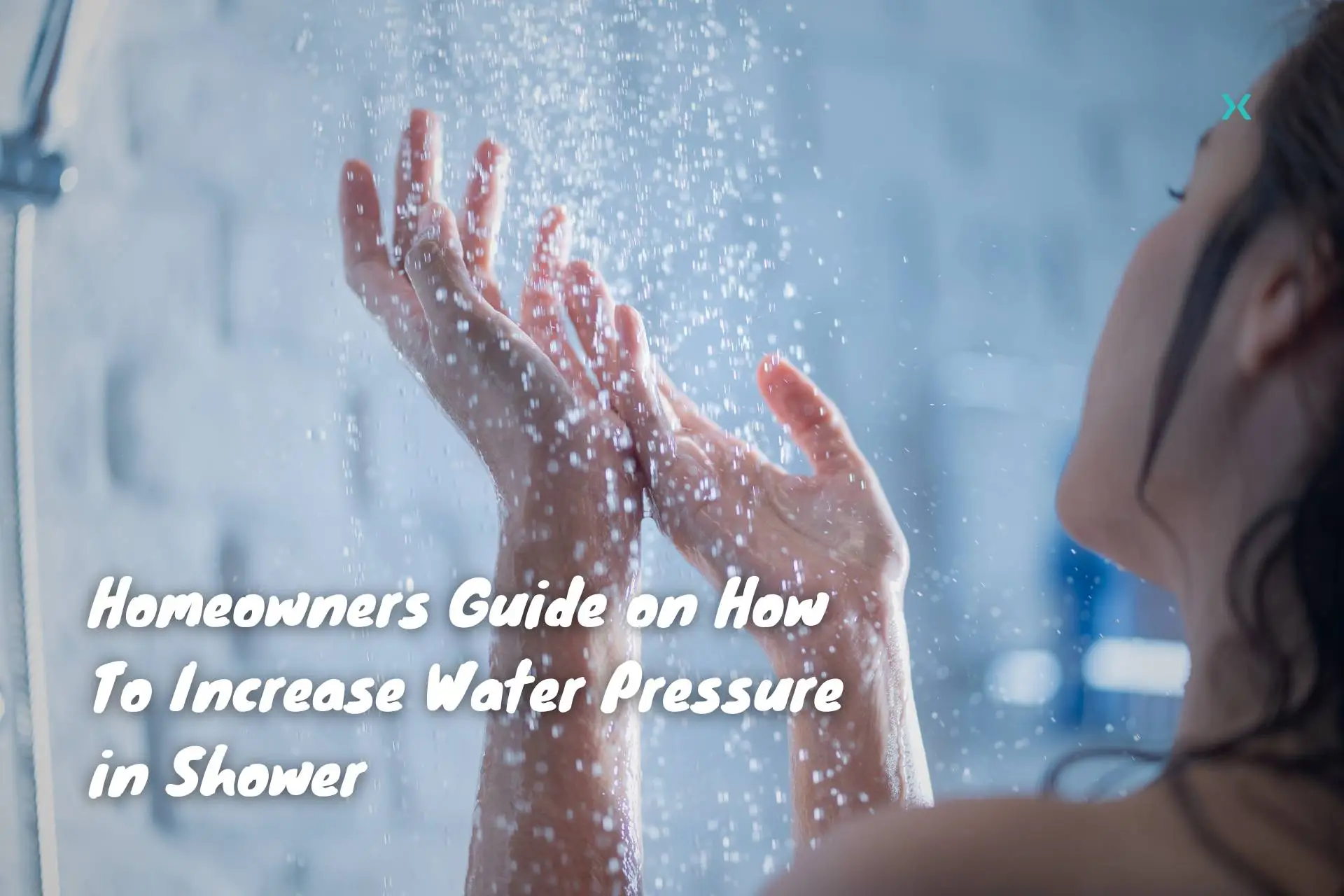🚿 How To Increase Water Pressure in Shower
A good, strong shower is something that most homeowners value highly, and understandably so.
However, low water pressure can be a common problem that leaves you underwhelmed and unsatisfied after your shower.
This article will provide you with a comprehensive guide on increasing pressure in your shower with effective and easy-to-implement solutions.
Table of Contents
💧 Understanding Your Home’s Water Pressure
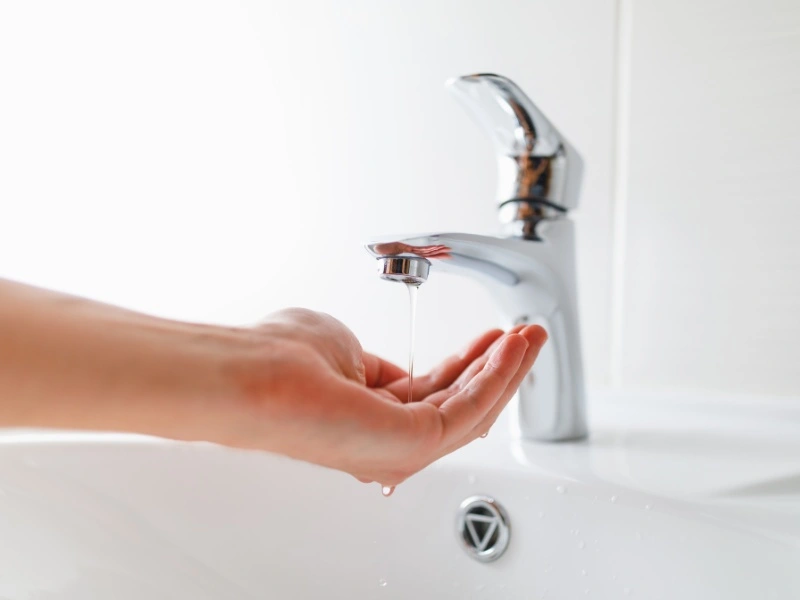
Before we dive into the solutions that can help you improve your shower’s water pressure, it’s essential to understand what pressure is and how it works in your home.
Water pressure is the force that moves water through your home’s plumbing system.
Water pressure is typically measured in pounds per square inch (PSI).
A typical home water pressure ranges from 30-60 PSI. Anything below 40 PSI is considered low pressure.
🚿 The Basics of Water Pressure
To understand how to increase water pressure in your shower, let’s first take a closer look at the basics of water pressure.
Water is fed into your home through a main supply pipe, usually made of copper or PVC.
The pressure is then regulated by a pressure-reducing valve (PRV), a water valve that maintains a consistent water pressure throughout the home.
It’s important to note that several factors can affect your home’s water pressure.
For example, if your home is located at the bottom of a hill, your pressure may be higher than if you lived at the top of a hill.
The age and condition of your home’s system can also impact pressure.
🚿 How to Measure Your Shower’s Water Pressure
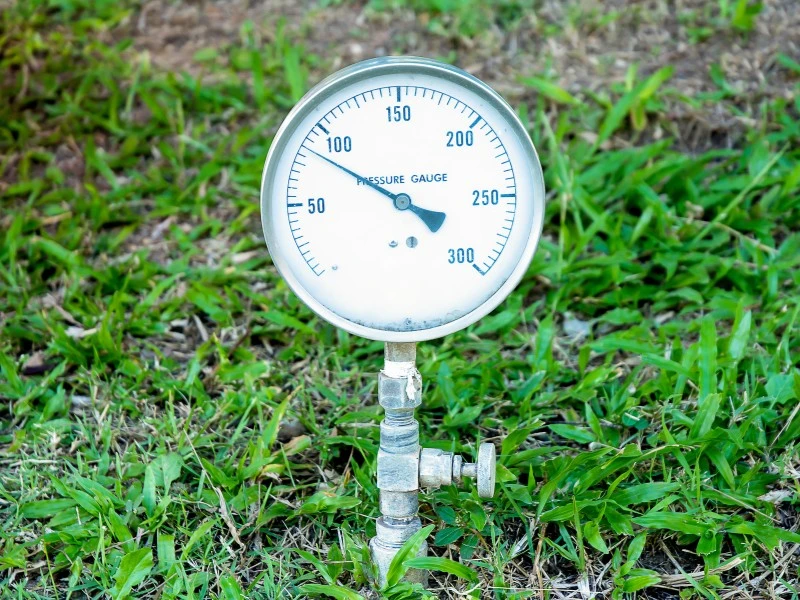
One of the first things you will need to do is determine the current pressure in your shower.
You can use a simple water pressure gauge that attaches to an outdoor faucet or an available hot water outlet in the bathroom.
This gauge reads the water pressure in PSI.
Another way to check your shower’s pressure is to fill a bucket with water and how long it takes to fill up.
If it takes longer than usual, then low pressure may be the problem.
💧 Common Causes of Low Water Pressure in Showers
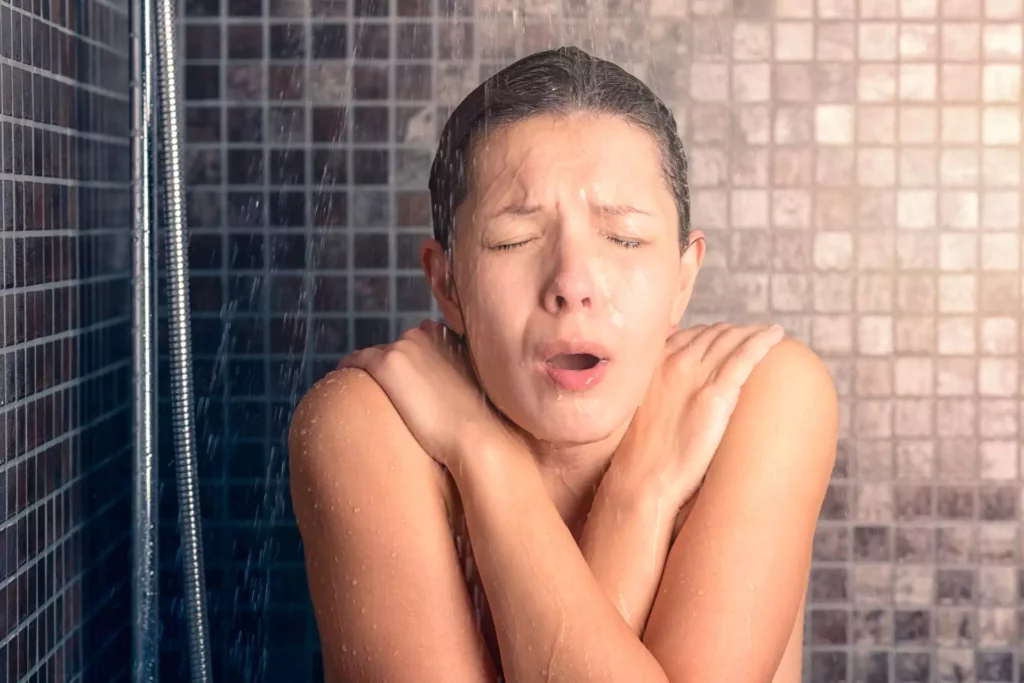
There’s nothing more frustrating than stepping into a shower only to be met with a weak, dribbling stream of water.
If you’re experiencing low pressure in your shower, don’t worry – you’re not alone.
Low pressure is a common problem that many homeowners face.
To fix the issue, it’s important to understand what could be causing it.
Here are some of the most common causes of low pressure in showers:
❌ Plumbing System Age and Design
If your home’s plumbing system is old, it could cause low water pressure.
Over time, pipes can become corroded, which can cause blockages that restrict flow.
Similarly, if your system is poorly designed, it may not be able to handle the pressure demands of modern-day appliances like showerheads.
It’s important to remember that the age of your system isn’t the only factor affecting pressure.
The size of your pipes, the distance between your home and the water source, and the number of appliances using water simultaneously can all play a role in determining your pressure.
❌ Mineral Deposits and Pipe Corrosion
Another common cause of low pressure in showers is mineral deposits and pipe corrosion.
Over time, minerals like calcium and magnesium can build up in pipes, limiting flow.
This can be especially problematic in areas with hard water containing high levels of minerals.
Corrosion can also be a problem.
Chemicals in the water and the pipe materials themselves breaking down over time can cause pipes to corrode.
This can lead to blockages that restrict flow and result in low shower water pressure.
❌ Faulty Showerheads or Fixtures
Finally, faulty showerheads or fixtures can also cause low pressure in showers.
Over time, a low pressure shower head can build up deposits and become clogged, restricting flow.
This can be especially problematic if you have a low-flow shower head, to begin with.
In addition, other fixtures in your shower, such as the faucet or the diverter valve, can also become clogged or damaged over time.
This can lead to low pressure and a less enjoyable showering experience.
Overall, there are several potential causes of low pressure in showers.
If you’re experiencing this issue, it’s crucial to identify the cause so that you can take steps to fix it.
Whether replacing an old system, installing a water softener to combat mineral buildup, or simply cleaning your shower head, there are many ways to improve your pressure and enjoy a better showering experience.
💧 How to Increase Water Pressure in Shower
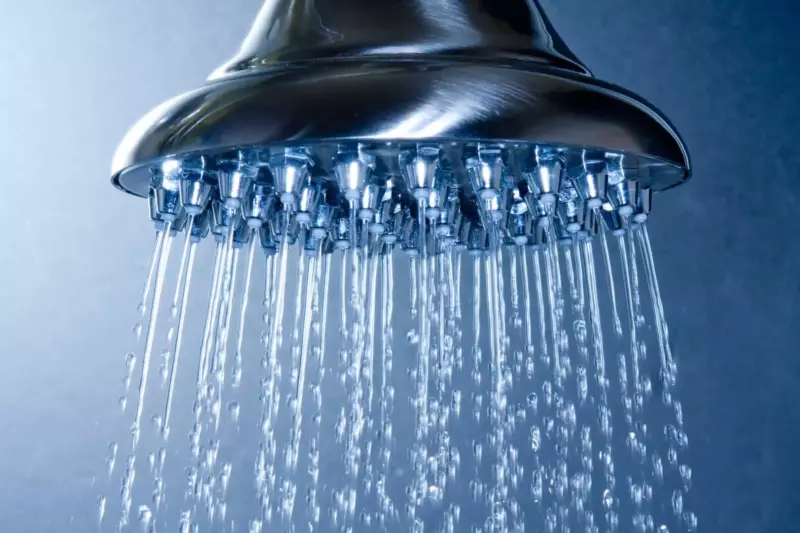
Are you tired of taking a shower with low water pressure?
Does it feel like standing under a trickle instead of a refreshing stream?
Don’t worry; there are several ways to increase the pressure in your shower and enjoy a more satisfying shower experience.
🧰 Cleaning or Replacing Your Shower head
A clogged shower head is one of the most common causes of low pressure in the shower.
Mineral deposits and debris can build up over time and block the water flow.
To fix this, remove the shower head and soak it in vinegar and water to dissolve the buildup.
Then, use a toothbrush or a small brush to remove any remaining debris.
Rinse the shower head thoroughly and reattach it to the shower arm.
If cleaning the shower head doesn’t improve the pressure, you may want to consider replacing it entirely.
Look for a high-pressure shower head designed for low-pressure situations.
These showerheads have smaller nozzles that increase the water velocity and provide a more powerful spray.
🧰 Checking for Leaks in Your Plumbing System
Another possible cause of low water pressure is a leak in your system.
Leaking pipes can reduce the water flow rate and cause a pressure drop.
To check for leaks, inspect the pipes for visible leaks or dampness.
Check under sinks, around toilets, and in the basement or crawl space.
If you notice any signs of a leak, call a plumber to fix the problem.
You can also perform a simple test to check for hidden leaks.
Turn off all faucets and appliances that use water, and then check the water meter.
If the meter is still running, you likely have a plumbing leak.
In this case, you should call a plumber to locate and repair the leak.
🧰 Adjusting the Water Pressure Regulator
The water pressure regulator is a valve that controls the pressure coming into your home from the main water supply.
If the regulator is faulty or not adjusted correctly, it can cause low water pressure in your shower heads and other fixtures.
Adjusting or changing the regulator can be complex, so it is often best to consult a plumber.
However, if you’re handy and want to adjust the regulator, locate the valve near the main water supply.
Use a wrench to loosen the lock nut and then turn the adjustment screw clockwise to increase the pressure or counterclockwise to decrease it.
Be careful not to overdo it, as too much pressure can damage your pipes and fixtures.
By following these tips, you can increase the water pressure in your shower and enjoy a more invigorating and refreshing shower experience.
Don’t settle for a weak and unsatisfying shower – take action today and enjoy the full power of your water supply!
📗 Related Reading: 5 Quick Ways to Fix Low Hot Water Pressure
💧 Professional Solutions for Increasing Shower Water Pressure
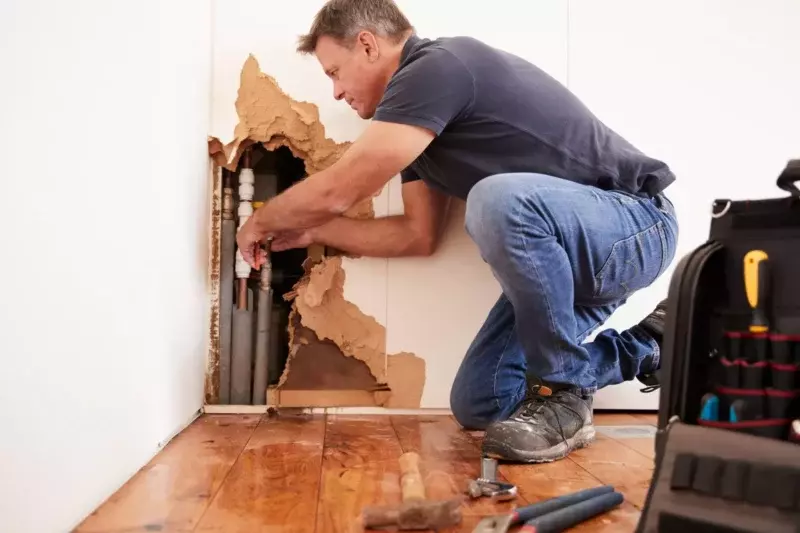
Many homeowners struggle with low water pressure in their showers, but luckily, professional solutions are available to help.
🧰 Installing a Water Pressure Booster or Shower Pump
If you’ve tried all the simple fixes, such as removing mineral buildup and cleaning your shower head, and you’re still not satisfied with your water pressure, it may be time to consider installing a water pressure booster or shower pump.
This pump can be installed in your home’s water supply system to increase water pressure and ensure optimal flow in your shower.
Water pressure boosters or shower pumps come in various sizes and styles, so choosing one that’s right for your home is essential.
Both water pressure boosters and shower pumps serve the same purpose.
Both devices are designed to increase water pressure in your plumbing system.
Shower pumps generally target boosting pressure in the shower whereas a booster is typically used to boost pressure throughout the entire home.
A professional plumber can help you determine which type of booster or shower pump is best suited for your needs and can install it for you.
With a shower pump, you’ll enjoy a stronger, more satisfying shower experience.
You’ll also benefit from improved water pressure throughout your home, making washing and doing laundry easier and more efficient.
🧰 Replacing Old Plumbing
If your home’s plumbing system is old and outdated, you may need to replace it to improve water pressure.
This can be a significant undertaking, so it’s essential to consult a plumber to ensure the job is done correctly.
Old plumbing can cause problems, including low water pressure, leaks, and even water damage.
By replacing your old pipes and fixtures, you can improve the overall efficiency and safety of your home’s water supply system.
A professional plumber can assess your home’s plumbing system and recommend the best action to improve your water pressure.
They can also provide guidance on choosing new fixtures and appliances that will work best with your new system.
Investing in new plumbing may seem like a significant expense, but it can actually save you money in the long run.
New plumbing is more efficient and less prone to leaks and other problems, which can lead to lower water bills and fewer repair costs over time.
Whether you install a water pressure booster or replace your old plumbing, a licensed plumber can help you achieve the high water pressure you desire.
Don’t suffer through another lackluster shower – contact a plumber today to learn more about your options.
💧 Maintaining Optimal Water Pressure in Your Shower

🧰 Regular Plumbing Inspections
To prevent low water pressure from occurring in the first place, it’s important to inspect your plumbing for potential problems routinely.
This can include inspecting pipes for signs of leaks or corrosion and checking appliances like showerheads for clogs.
🧰 Preventing Mineral Buildup
Consider installing a water softener or filter to prevent mineral buildup in your pipes.
This will help to remove minerals from the water before it enters your system.
🧰 Proper Shower Head Maintenance
Proper shower head maintenance is important to prevent clogs and low water pressure.
Regularly cleaning your shower head and removing mineral deposits can keep it functioning optimally.
🚿 Final Thoughts on How to Increase Water Pressure in Shower
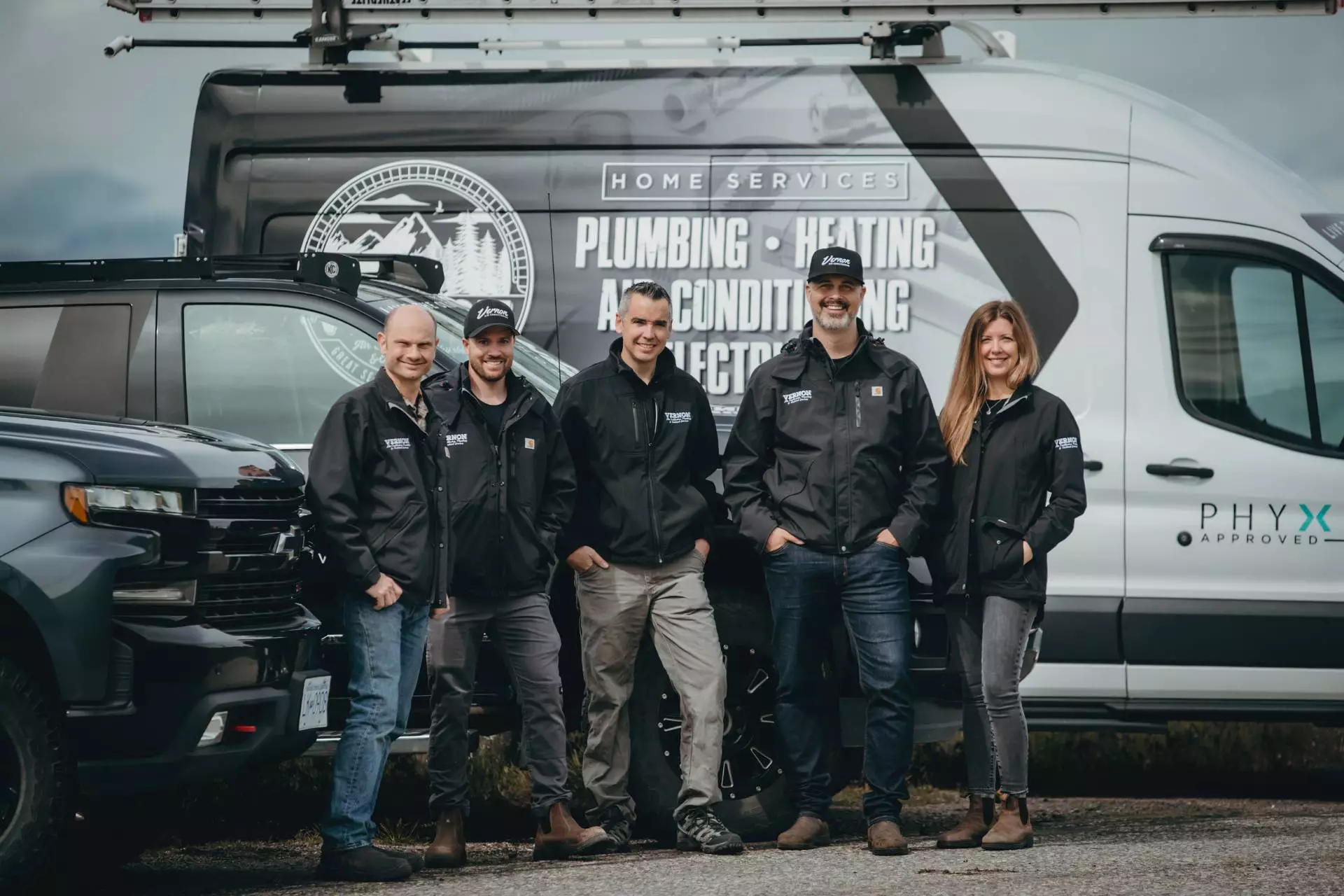
Low water pressure can be a frustrating problem to deal with, particularly when it comes to showering.
Fortunately, you can take steps to increase pressure in your shower, whether that’s cleaning your shower head, checking for leaks in your plumbing system, or installing a pressure booster.
Following the tips outlined in this guide, you can enjoy a robust and satisfying shower again.
📗 Related Reading: DIY Guide to 15 Common Plumbing Problems & Solutions

